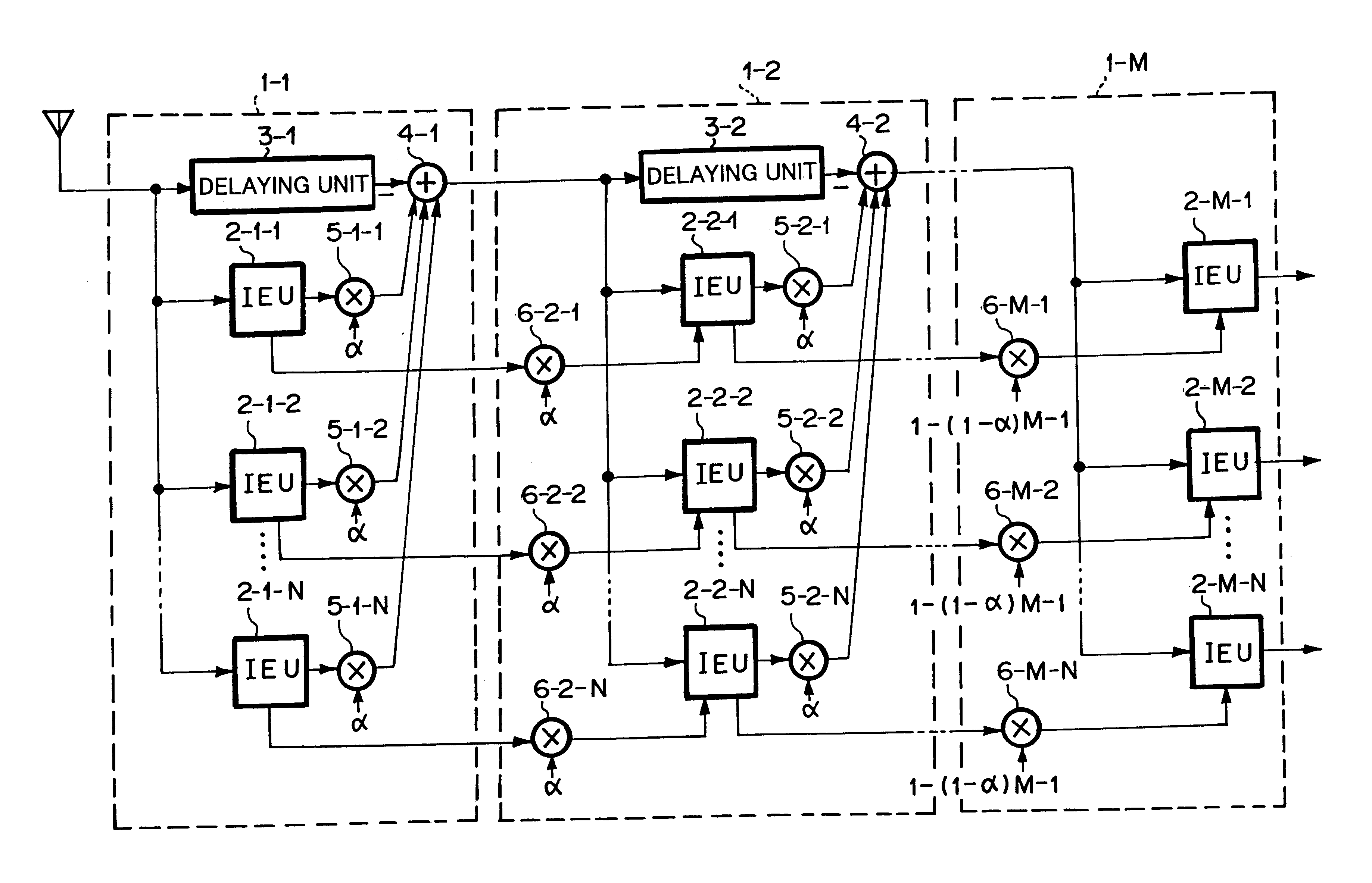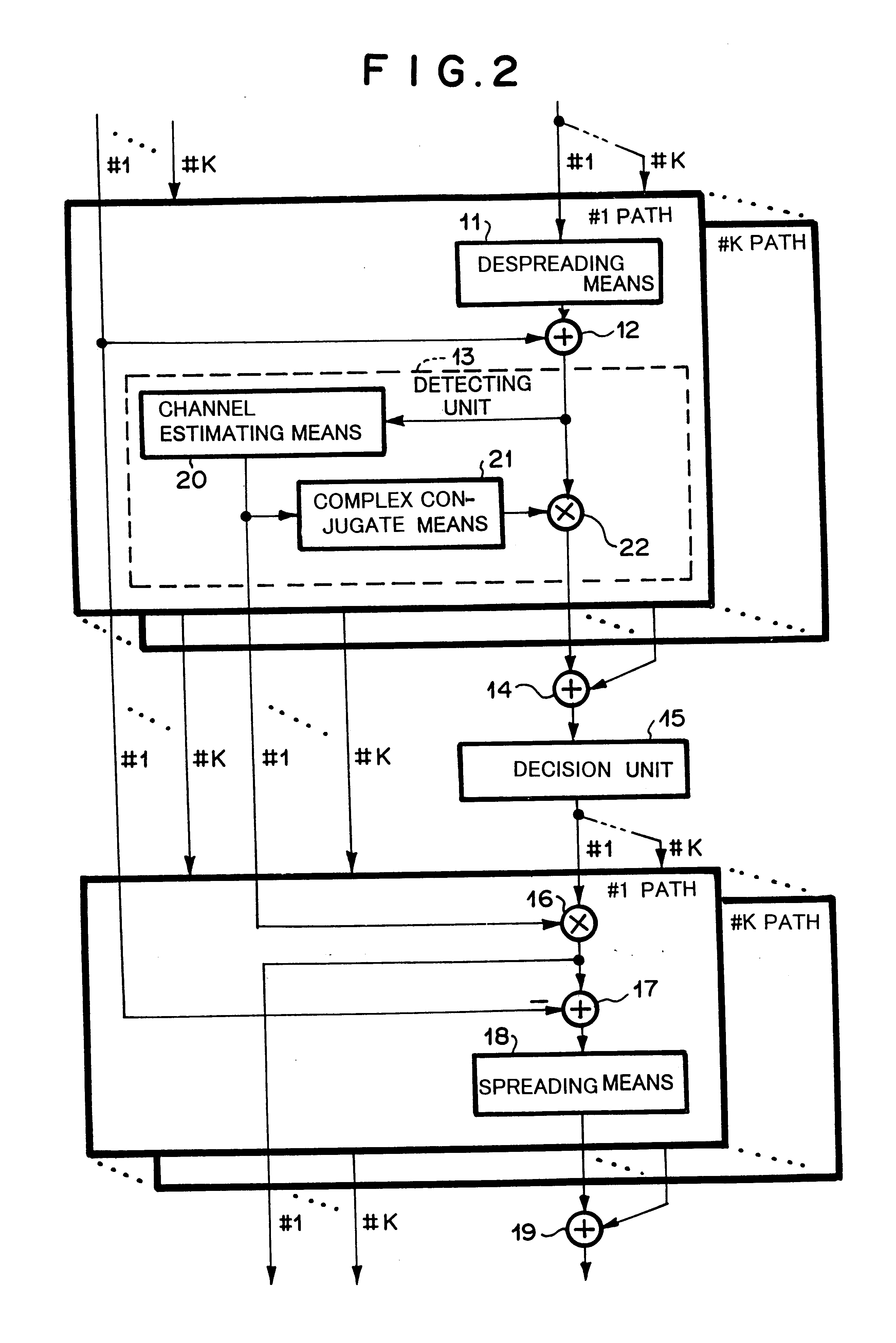Multi-user receiving apparatus and CDMA communication system
a multi-user, receiving apparatus technology, applied in the direction of multiplex communication, electrical equipment, transmission, etc., can solve the problems of complex circuit structure, deterioration of reception characteristics, and largely deterioration of interference cancellation characteristics
- Summary
- Abstract
- Description
- Claims
- Application Information
AI Technical Summary
Problems solved by technology
Method used
Image
Examples
first embodiment
[First Embodiment]
FIG. 1 is a block diagram showing the structure of a multi-user receiving apparatus according to a first embodiment of the present invention. The multi-user receiving apparatus comprises M receiving units 1-1, . . . , and 1-M on M stages (where M is any integer that is 2 or larger). A receiving unit 1-m (where 1.ltoreq.m.ltoreq.M) on each stage comprises N interference estimating units (referred to as IEU) 2-m-n, a delaying unit 3-m, an adding unit 4-m, a first multiplying unit 6-m-n, and a second multiplying unit 5-m-n. The N IEUs 2-m-n receive N user signals (where N is any integer that is 1 or larger).
The n interference estimating units (IEU) 2-m-n for n user signals (where n is any integer of 1.ltoreq.n.ltoreq.N) on the m-th stage (where m is any integer of 1.ltoreq.m.ltoreq.M) input an interference cancellation residual signal (an output signal of an adding unit 4-(m-1)) obtained in the interference canceling process on the (m-1)-th stage and signals of which ...
second embodiment
[Second Embodiment]
FIG. 3 is a block diagram showing the structure of a multi-user receiving apparatus according to a second embodiment of the present invention. The structure of the multi-user receiving apparatus according to the second embodiment is almost the same as the structure of the multi-user receiving apparatus according to the first embodiment except that a first weighting coefficient of first multiplying units 36-m-n and a second weighting coefficient of second multiplying units 35-m-n of the second embodiment are different from those according to the first embodiment.
The first and second weighting coefficients of the first and second multiplying units are [1-(1-.alpha..beta..sub.n1)(1-.alpha..beta..sub.n2) . . . (1-.alpha..beta..sub.nm-1), .alpha..beta..sub.nm ].
In this case, the value of .alpha. is the same as that of the first embodiment shown in FIG. 1. The value of .beta..sub.nm depends on each stage and each user signal. Thus, the value of .beta..sub.nm is an adapt...
PUM
 Login to View More
Login to View More Abstract
Description
Claims
Application Information
 Login to View More
Login to View More - R&D
- Intellectual Property
- Life Sciences
- Materials
- Tech Scout
- Unparalleled Data Quality
- Higher Quality Content
- 60% Fewer Hallucinations
Browse by: Latest US Patents, China's latest patents, Technical Efficacy Thesaurus, Application Domain, Technology Topic, Popular Technical Reports.
© 2025 PatSnap. All rights reserved.Legal|Privacy policy|Modern Slavery Act Transparency Statement|Sitemap|About US| Contact US: help@patsnap.com



